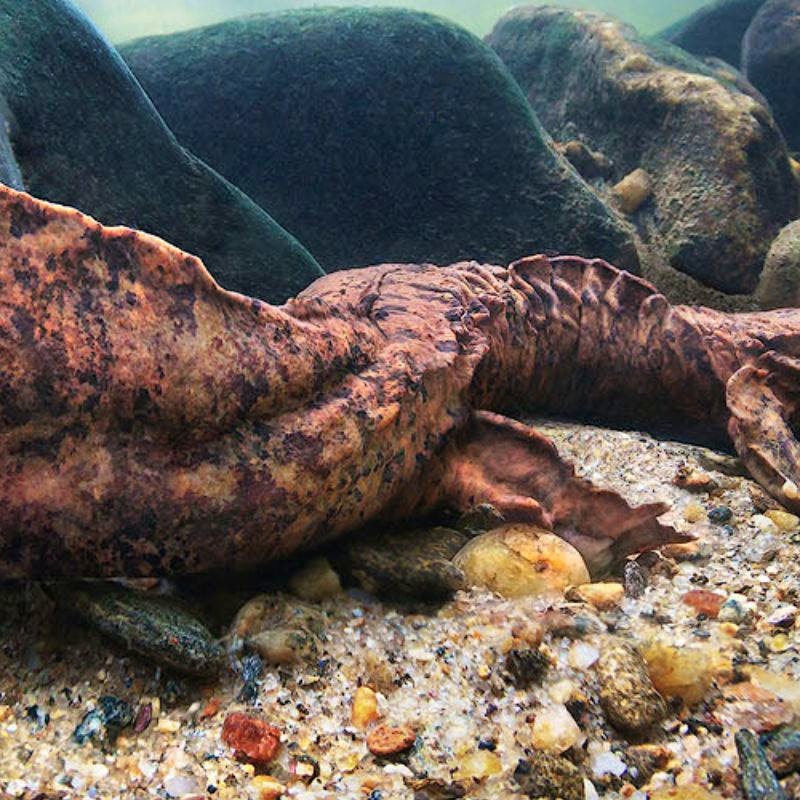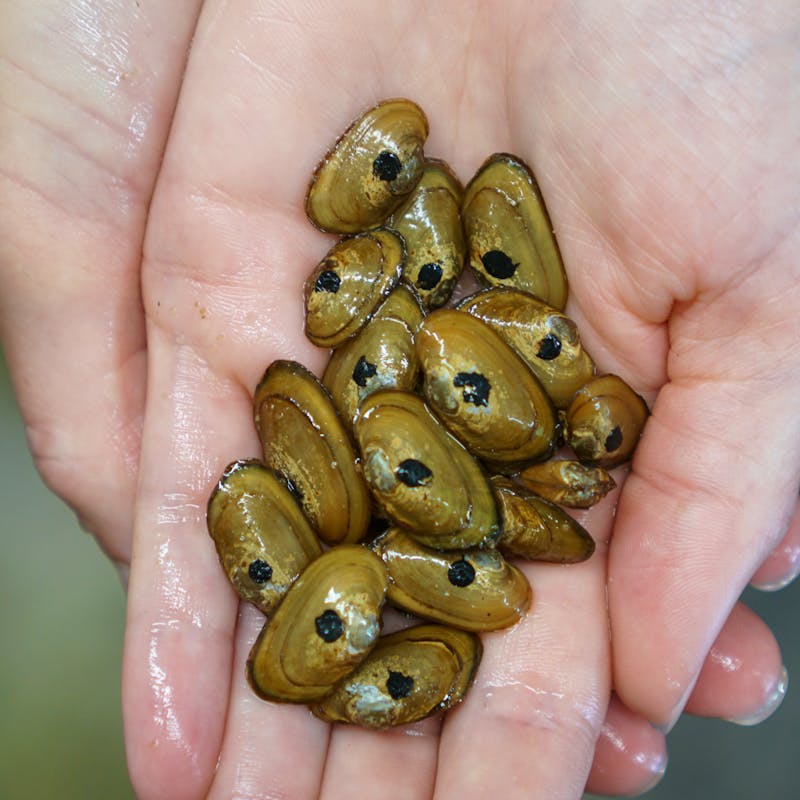Join our mobile Rapid Response Network!
You can be the first to hear about how we’re going to hold this administration accountable and how you can fight back for wildlife!
Sometimes known as the “devil dog” or “snot otter,” the eastern hellbender is North America’s largest salamander.
Hellbenders are a fully aquatic species. They have inhabited the rivers of the eastern United States for the last 65 million years and are indicators of healthy streams. But without direct intervention, they could be headed for extinction.
Why are hellbenders imperiled?
Hellbenders require very specific habitat conditions to survive. Like some other salamanders, they breathe through their skin and require clean, oxygen-rich water. They also need access to prey, be able to find mates and large slab rocks with accessible crevices underneath to make homes and protect maturing eggs. Humans, however, have dramatically changed and polluted the landscape, leading to declines in habitat and water quality that now threaten the hellbenders’ survival.
Hellbenders are particularly vulnerable to sediment, pollutants and reduced oxygen levels in their environment. Threats to their habitat include nutrients and pesticides, runoff, erosion from agriculture and urban development, and mining activities that deposit heavy metals and toxins into nearby waterways. Dams and road crossings also isolate populations.
The Missouri Distinct Population Segment of the eastern hellbender is listed as endangered. All other populations were proposed for listing in December 2024.

Defenders' Impact
Restoring habitat and recovering hellbender populations is a complex conservation challenge with no one simple solution.
Defenders of Wildlife launched the Southeastern Hellbender Conservation Initiative in 2017 to bring together science, education, community outreach and on-the-ground habitat restoration to advance hellbender population recovery on private lands in the Southeast. Now under the lead of USDA Natural Resources Conservation Services’ Working Lands for Wildlife Program, our SEHCI Private Lands Biologists are stationed across the Southeast. They and work directly with agricultural landowners in the highest priority watersheds to provide education about hellbenders and their habitats, help landowners develop and implement best management practices and connect them with financial resources to support their conservation efforts. Defenders also provides entertaining and educational outreach events for both agricultural and residential landowners to demonstrate how individual actions to protect and improve water quality can provide win-win outcomes for both hellbenders and communities.
Every summer, Defenders also participates in hellbender surveys. These involve snorkeling through hellbender habitat to study individuals and try to determine where populations are growing and declining.
What You Can Do
Public information regarding hellbender sightings is enormously helpful. If you find a hellbender leave it alone but take a photo, note the location and email lori.williams@ncwildlife.org. If you catch one while fishing, carefully remove the hook without hurting the animal or cut the line close to the hook. Then, return the hellbender to the water and report the sighting.
Near waterways, plant vegetation along the banks to stabilize the soil and avoid constructing structures and using harmful chemicals like herbicides.

About
Southern New York to northern Georgia, including parts of Ohio, Alabama, Mississippi, Arkansas, Missouri, Oklahoma and Kansas. Hellbenders need clear, cool, fast-flowing, well-oxygenated streams with healthy riparian buffers and plenty of cobble and large slab rocks for nesting.
These unique critters were historically widespread and abundant across 15 states, but surveys across their range have revealed their numbers are falling fast. About 78% of populations are declining or already extirpated. The most stable remaining populations occur overwhelmingly on public lands.
Generally nocturnal. Hellbenders hang out under rocks in fast-moving water during the day and emerge at night to crawl along the river bottom with their grippy toe pads, hunting for crayfish and other prey items. They are thought to have relatively small home ranges of around 2,000 square meters. Hellbenders are typically solitary creatures, except during the nesting season, when males engage in ferocious battles over prime nesting habitat.
As a long-lived species, hellbenders don’t reach sexual maturity until five or six years of age. They reproduce in late August to October. Females can produce 150-450 eggs each season and may lay eggs in multiple burrows with different males. Once the eggs are fertilized, the male will chase the female away and protect the eggs himself while they mature, warding off predators and fanning the eggs with his tail to ensure they get enough oxygen. Eggs hatch in 45 to 75 days.
Young hellbenders look like tiny adults, except with small frilly gills, which they lose at about 1.5 years of age.
Hellbenders eat mostly crayfish, but will also eat insects, small fish, tadpoles, frogs, water snakes or even other salamanders.
News









